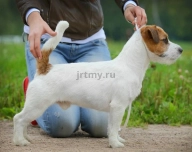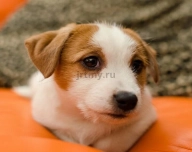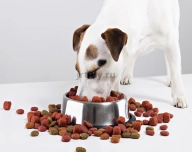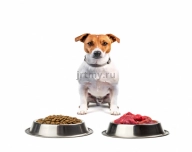How did one breed make two?
How did one breed make two?
Who is he really, this small, compact, merry little devil? The history of the Jack Russell Terrier (aka Parson Russell Terrier) is a mixture of legend and reality. Where legend ends and truth begins is still a matter of debate among breed lovers.
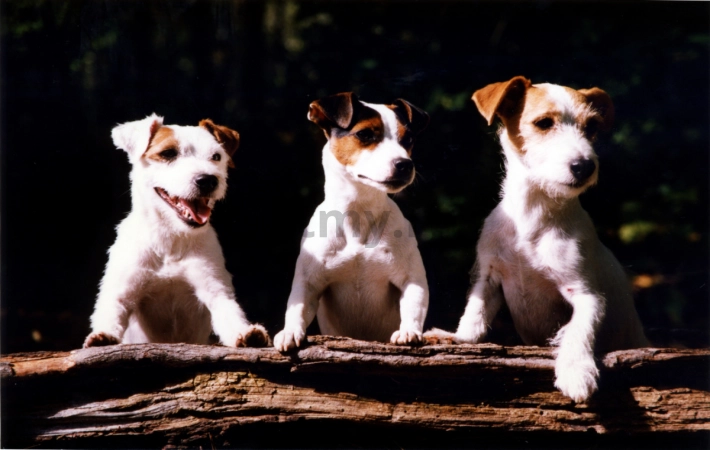
After Parson Russell's death, his pack disintegrated and the dogs were sold off. One of Russell's successors was his young contemporary Arthur Heinemann, who is considered the last breeder of true Jack Russell terriers. He used his terriers not only to hunt foxes and otters but also badgers. In 1904, Heinemann first drafted a standard for this breed, the standard described a working dog with a height of 35 cm, with a narrow chest and a stiff coat, which corresponded to the type of dogs preferred by John Russell.
It should be mentioned here that crossing terriers with dachshunds and corgis was used in the development of the breed. Corgi blood was added to give the breed intelligence and obedience, and dachshunds to enhance working qualities. The result of this mixing of blood was the short-legged Russell Terriers.
In 1914, Heinemann founded the Parson Jack Russell Club, previously called the Somerset Badger Digging Club. The change in the club's name was a landmark, as the name originally indicated a narrow purpose: hunting badgers and otters. Heinemann also added fox hunting, which required a new quality in terriers: a narrow chest so the terrier could work in a fox hole. Great attention was also paid to the dogs' coats and ears.
The ears should not be standing up, otherwise, the earth could get into the ear canal. And the coat should be thick and stiff to protect the terrier from the weather and to keep the earth from sticking to it.
Perhaps the change in the name of the club was also due to a desire to identify his dogs with the name of John Russell, a famous breeder in the terrier world.
Arthur Heinemann was also a famous terrier breeder and sold his dogs all over the country and even abroad. In 1930, after his death, Heinemann's partner Annie Rawls Harris continued selling dogs and the work of the Parson Russell Terrier Club almost until World War II. Then came what is known as the lean years in the breed's development. Until, in 1975, Mrs. Romain Moore founded the Jack Russell Club of Great Britain. The purpose of this organization was to develop and preserve the working terriers known as Jack Russell Terriers.
Mrs. Moore conducted a survey among prominent terrier breeders in Great Britain about the standard that a working terrier should meet.
The result was that the Club adopted the first standard of the breed, which allowed two varieties of the breed - short-legged - up to 27 cm at the withers and long-legged - up to 36 cm at the withers.
According to the standard, almost any working terrier of predominant white color, fitting approximate description of the breed, could be registered in the club.
The system of priority registration of dogs in the club was interesting. Working dogs were registered only after they reached the age of 18 months, and only after inspection by special inspectors, who strictly measured the height of the dog, its weight and build. The point of this priority registration was to select perfect individuals to preserve the uniqueness of the breed,
In Great Britain, the breed was rapidly gaining popularity and the need for its official recognition and registration at the national Kennel Club of Great Britain was growing. The members of the Jack Russell Club of Great Britain were divided into two camps. One side was vehemently against joining the Kennel Club because they thought that this would change the breed from a working breed to a show breed and would lose its unique qualities. However, the other side argued that if the breed develops only working qualities and not exterior, it can lead to degradation of the breed. And the recognition of the breed by the British Kennel Club will give a new impetus to the development of the breed, its international recognition, and promotion, the consolidation of standards, and will bring only good.
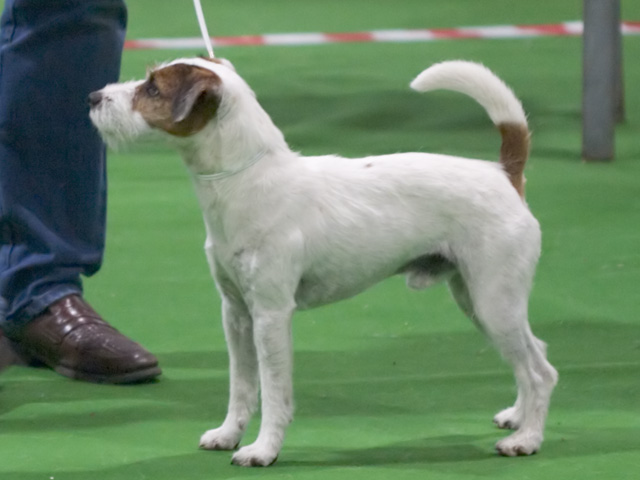
In 1990 the breed was nevertheless registered by the British Kennel Club under the name of the Parson Jack Russell Terrier and the standard of the breed was recognized as a tall, 30-38 cm tall terrier.
In 1999 the name of the breed was changed to the Parson Russell Terrier. And in 2005 the breed standard began to allow both tall and short-nosed representatives of the breed, from 25 cm to 38 cm.
After the official recognition of the breed by the English Kennel Club, it was time for international recognition. This is only possible after the breed had been registered and the standard had been enshrined by the Federation Cynologique Internationale (FCI).
This registration took place in 1990. The breed has been registered under the name Parson Jack Russell Terrier and standard No 339 has been accepted which recognized both high and low dogs (25-38 cm at withers).
Let's make a small temporary digression. In Australia, Jack Russells began to be imported in the 70s. And Australian enthusiasts began to "cultivate" short-nosed representatives of the breed. They also wrote the first standard for Jack Russell Terriers. The Australians were the first to forbid the mating of long-legged terriers with short-legged ones, trying to consolidate the breed.
And it was the Australian Kennel Club that played the main role in dividing the breed standard into two separate ones. Thanks to the Breeders on the Green Continent the FCI passed Standard No. 345 for the Jack Russell Terriers (short-nose terriers, 25-30cm tall) and Standard No. 339 for the Parson Russell Terriers (tall-nose terriers, 33-36cm tall) in 2001.
As you can see, literally 100 years ago there was no division between these breeds, so it is completely understandable how short-nosed parents can have tall-nosed offspring and vice versa. It will be decades before everything falls into place.
Lecture-commentary to the 345 standard on the Jack Russell Terrier by Ms. R. N. Frances Little (Australia), breeder and expert terrier group.
Comparison of Jack Russell Terrier and Parson Russell Terrier breed standards
|
Body of JRT |
General appearance: rectangular. Croup: flat; distance from withers to root of tail is slightly greater than the height from the withers to the ground. Loin: The loins should be short, strong, and muscled. Chest: Chest is deep rather than wide, the brisket has to be located on height midway between the ground and the withers. The ribs behind the elbows should be spanned by the palms of hands - in the amount of approximately 40-43 cm. Sternum: the edge of the sternum is clearly in front of the shoulder. |
|
Tail |
May droop at rest; in motion must be in a vertical position; if docked, the tip of the tail should be at ear level. |
|
Forelegs |
Shoulders: well tilted back, lightly loaded by muscles. The shoulder is of sufficient length and angulation to ensure elbows are set under the body. Forearm: Straight from the elbows to the toes whether it is viewed from the front and side. |
|
Hind legs |
Strong and muscular, balanced in proportion to the shoulder. Patella: Well bent. Hock: Low. Metatarsi are parallel in free-standing looking at the dog behind. |
| Paws |
Small, rounded, tough; soft pads, toes moderately arched; turning neither in nor out. |
|
Movement |
True, free, and springy. |
|
Hair Coat |
HAIR: coat may be smooth, fissure, or rough; it should be protected from the weather; Coats should not be altered (the dog is stripped out) to appear smooth or fissure. |
| Colour |
Predominantly white color with black or reddish-brown spots (maybe from light to brown shades). |
| Size |
Ideal height: 25 to 30 cm. Weight: Being the equivalent of 1 kg to each 5 cm in height, i.e. a 25 cm high dog should weigh approximately 5 kg and 30 cm high dog - 6 kg. |
|
Limitation |
Any deviation from the foregoing points. Penalty for: Lack of true Terrier characteristics, exaggeration of any points, sluggish or unreasonable movement, defective mouth. NOTE: Male animals should have two normal testicles fully descended into the scrotum. |
|
Body of Parson RT |
Well balanced; The length is slightly longer than the height from the withers to the ground. Back: Strong and straight. Loins: Slightly arched. Chest: Of moderate depth, should not fall below the point of the elbow; capable of being spanned behind the shoulders by average size hands; edges should not be heavily compressed. |
| Tail |
Customarily docked. Docked: Length provides a good handhold; Strong, straight, moderately and high set, carried well up on the move. Undocked: moderate length and as straight as possible, giving a general balance to the dog; thick at the root and tapering to an end; moderately high set, carried well up on the move. |
|
Forelegs |
Strong, straight, joints should be turned neither in nor out. Shoulders: Long and sloping, well laid back, cleanly cut at withers. Elbows: Close to body, working free of the sides. |
|
Hind legs |
Strong, muscular with good angulation. Patella: Well bent. Hock: Low. Metatarsi: parallel, jog, beginning the movement. |
| Paws |
Compact with firm pads, turning neither in nor out. |
|
Movement |
Free, well-coordinated, straight front and rear. |
|
Hair Coat |
HAIR: Naturally harsh, dense thick, rough, or smooth; Belly and the inner surface of the thigh are coated. |
|
Colour |
Entirely white or predominantly white with a tan, lemon, or black (any combination), preferably located on the head and/or at the base of the tail. |
| Size |
Dogs ideal height at withers is 36 cm. Bitches ideal height at withers is 33 cm. 2 cm above or below is acceptable. |
|
Limitation |
Any deviation from the foregoing points. Any dog which clearly shows physical or behavioral abnormalities shall be disqualified NOTE: Male animals should have two normal testicles fully descended into the scrotum. |
